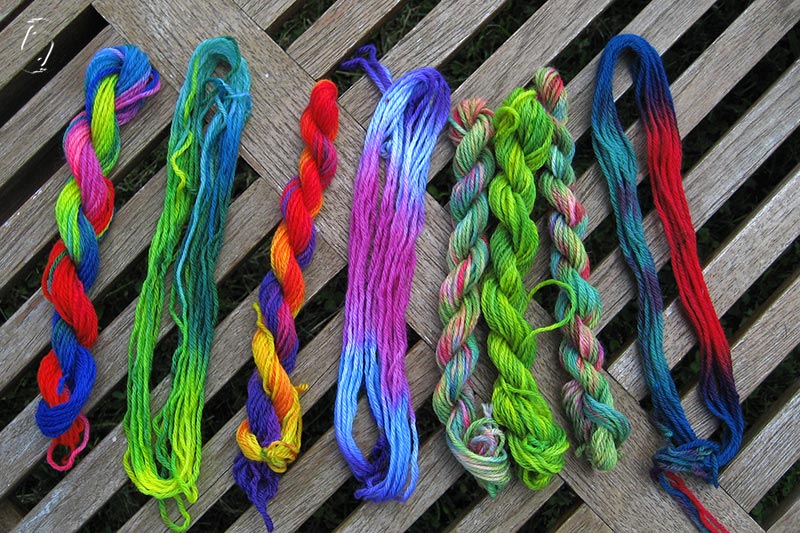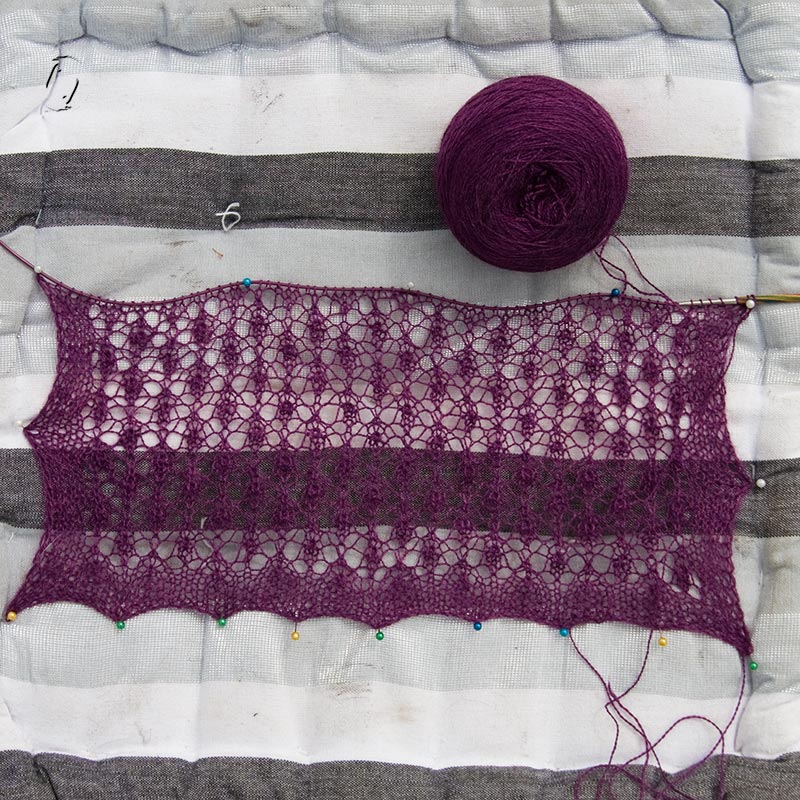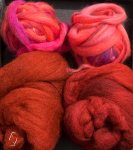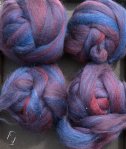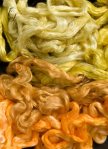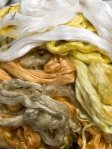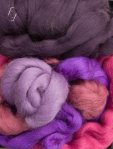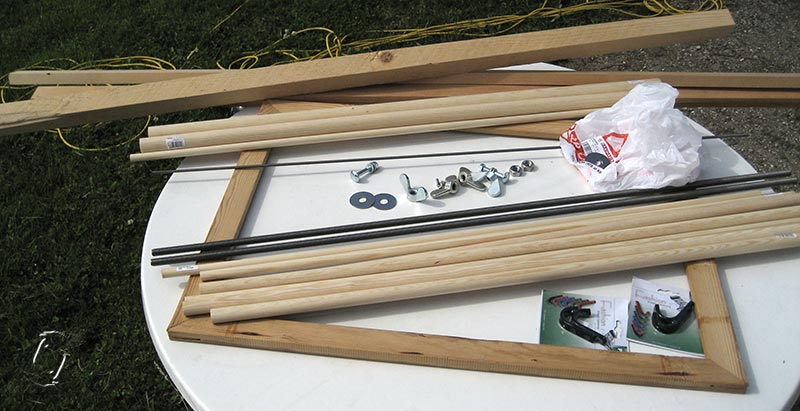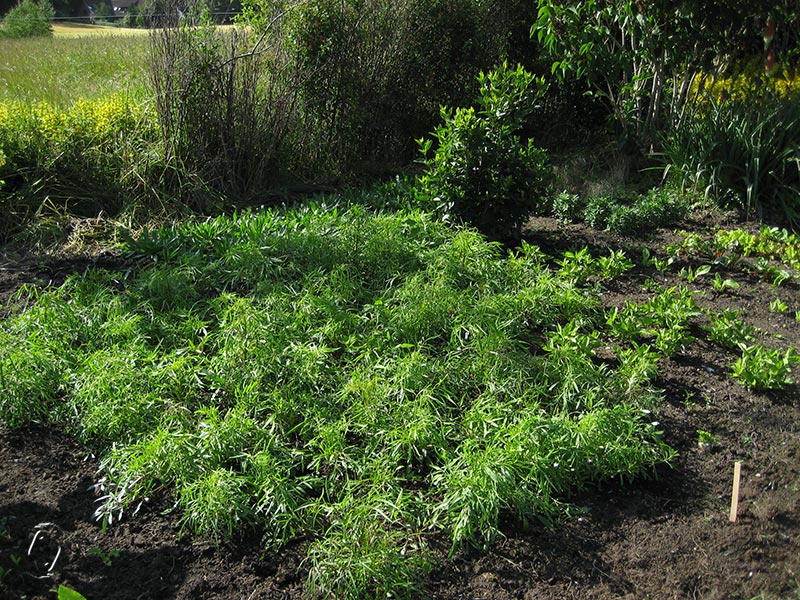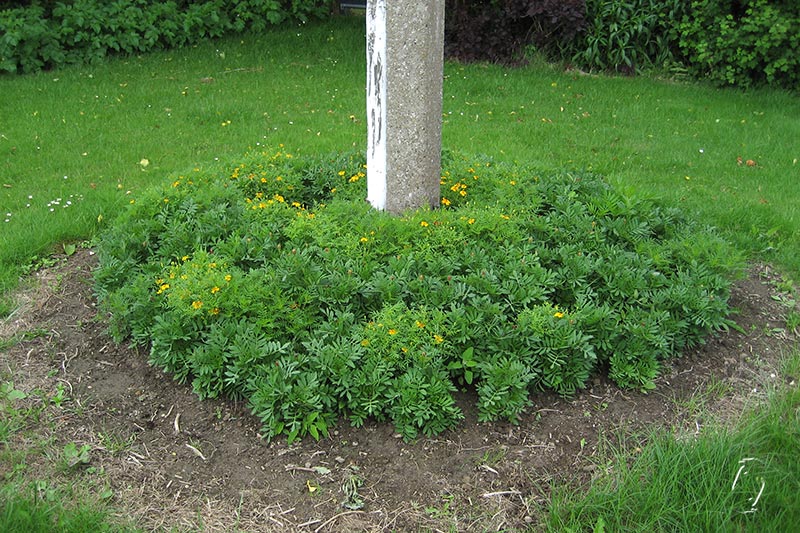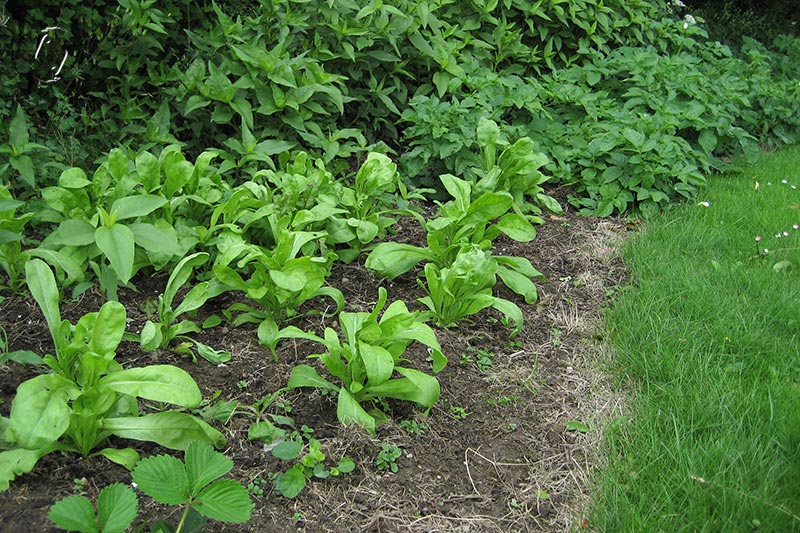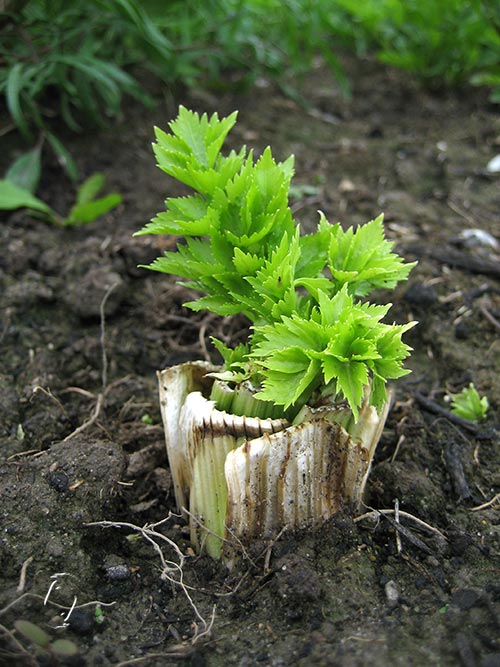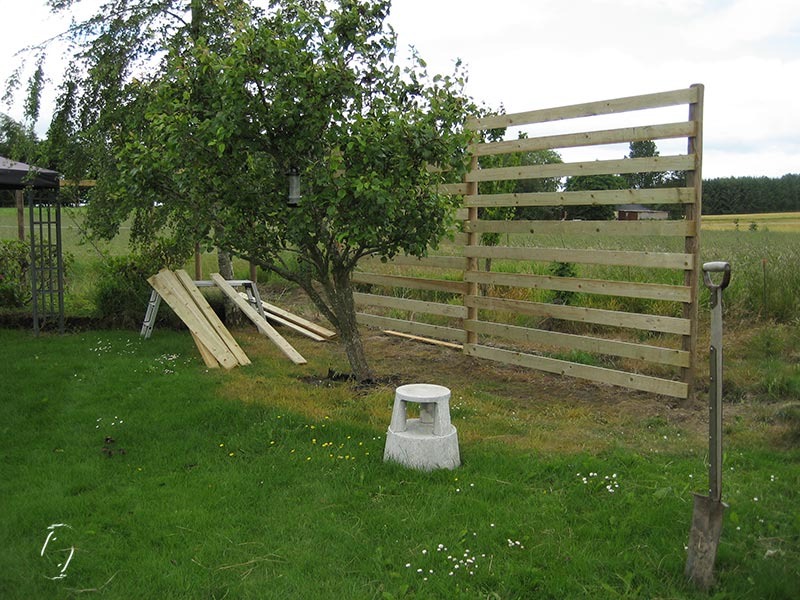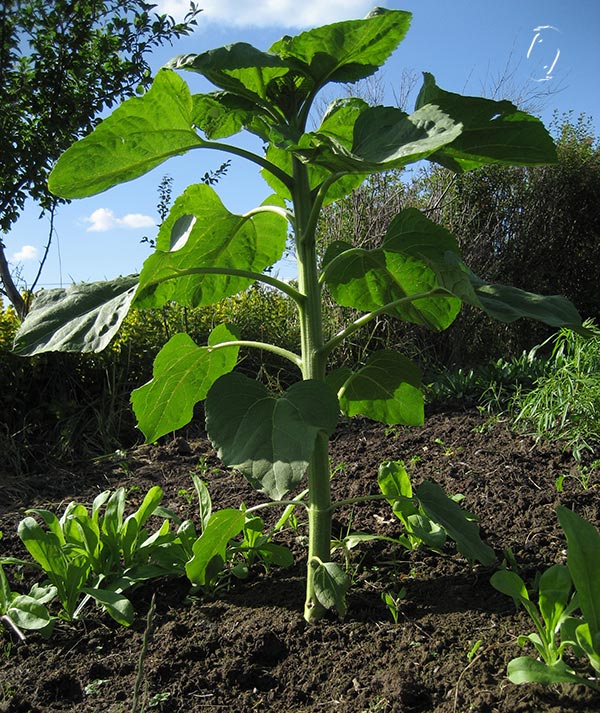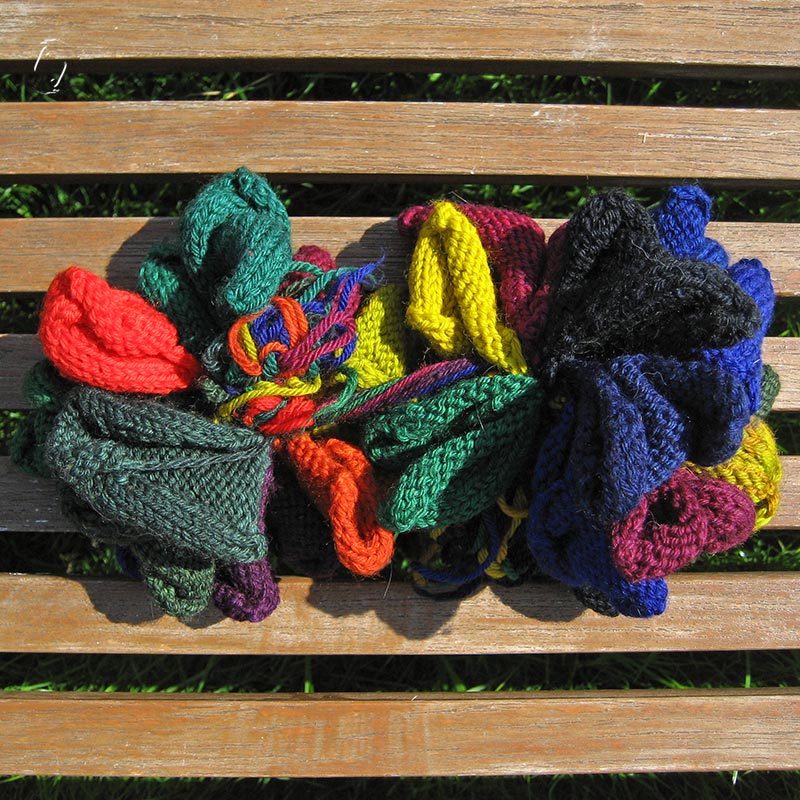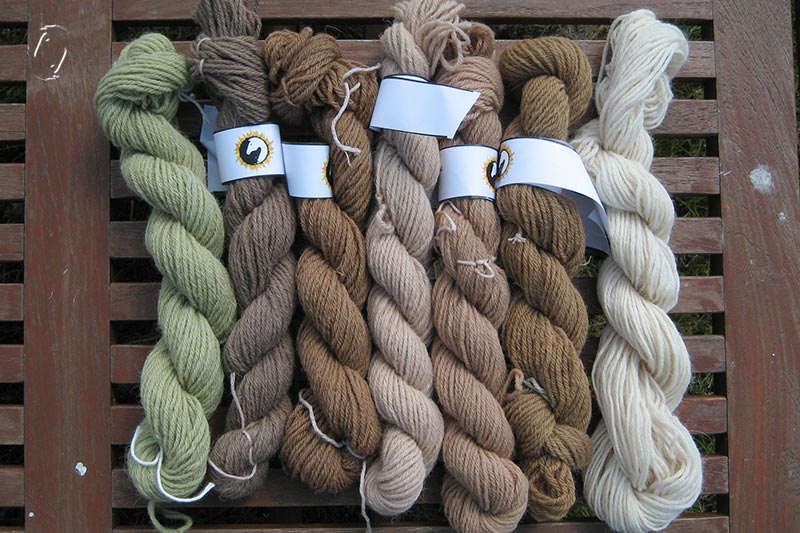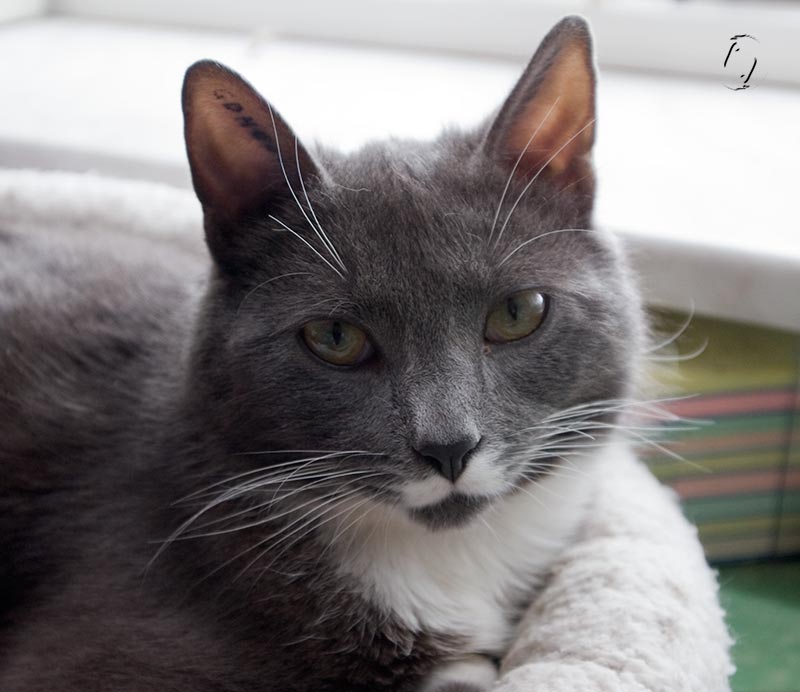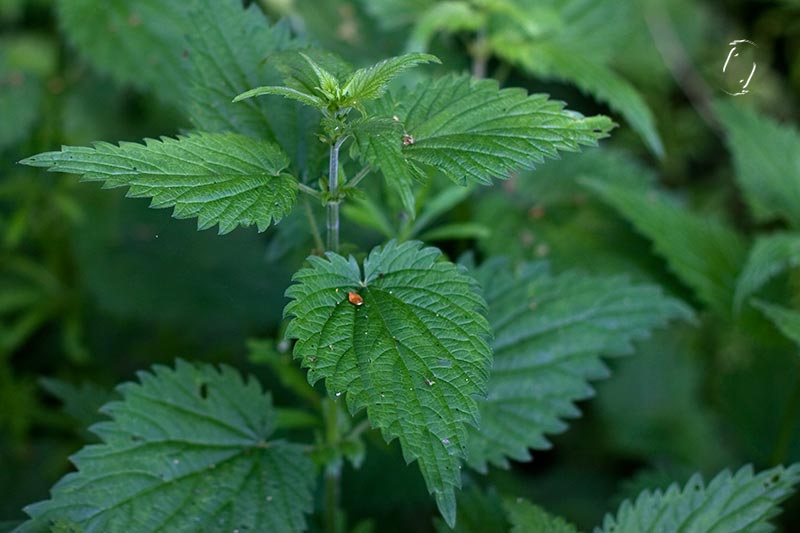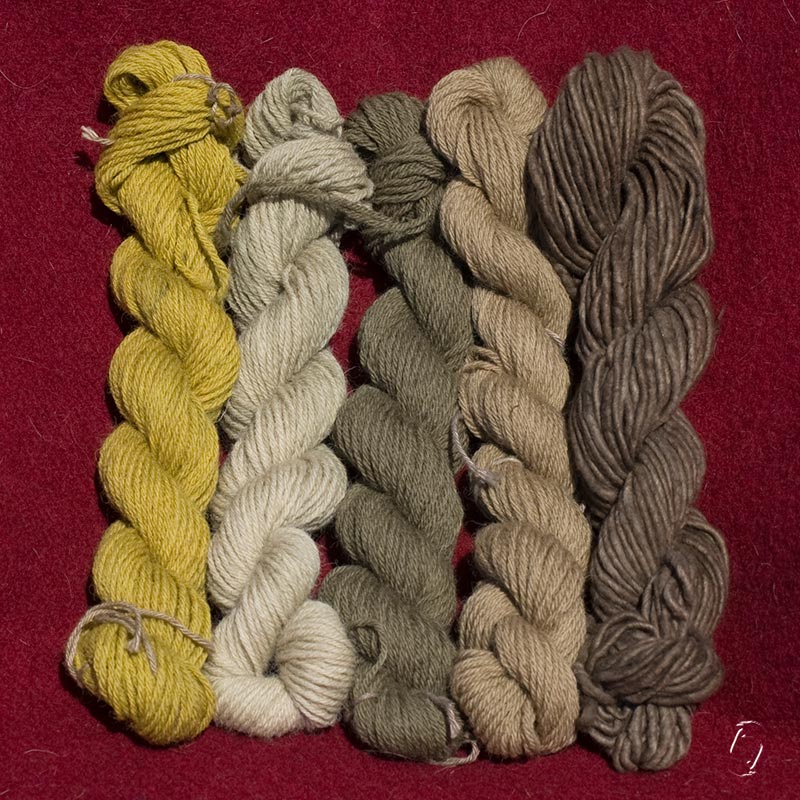I’m not doing Tour de Fleece, in fact I haven’t been spinning at all lately. I do have a few yarny things going on though. Working on little things, a bit at a time, since my good days are still spent in the garden mostly, and then I have days where I can barely keep my eyes open. Hexagons are excellent projects for such days, takes no time to knit up 3 g/ 7 m of yarn, but you still feel like you’ve made something.

Dyed a few more micro skeins for the hexiflats and knit up the ones I showed on Sunday. Some of the solids I didn’t like because I used too much dye, so I’ll reknit combining them with other colours and scraps. Even if it’s a random, messy blanket I do want to like each piece that I put into it! I’ve figured that for starters I’ll need something like 250, but then I’ve only done the sum in my head and I really suck at that. It’s going to be roundish/hexagonish in shape or something along those lines.
I couldn’t find my dye notes, so I just played around (again), aiming for a summer flowers vs. beach ball look. Ok, I made that up after I saw the skeins… I also did a few “ok, if 4 sections look like this on a 1 meter skein when knit up, what do 4 sections on a half meter skein look like knit up?” Perhaps I’ll even document the result for later use. Some of them were supposed to be more defined, but the colours bled and blended. Oh well…
And then I had leftover blue, so I thought I’d start a sky/cloud series for later use in various combinations. All sorts of possible scenarios there, morning skies, winter skyes, rainy skies, storm, sunset…
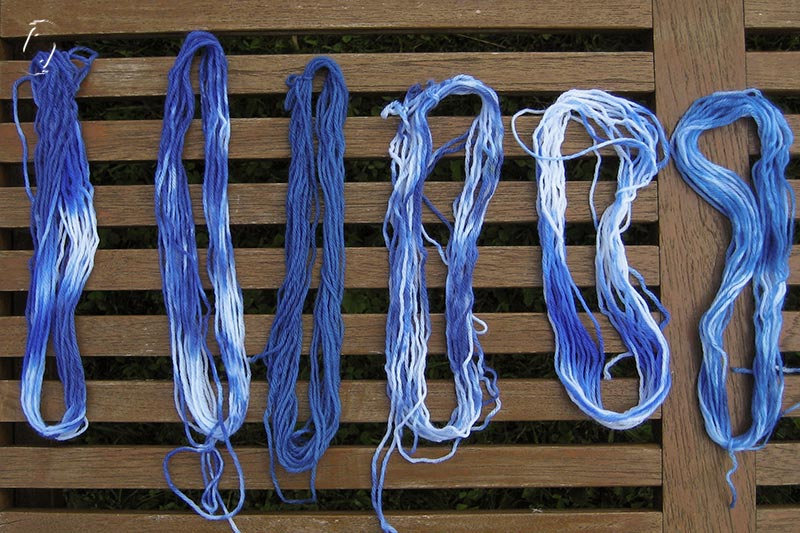
I also restarted knitting the lace scarf for my mum – and since I need the leftover yarn for something else I really should get it done, so I know HOW much I’ll have left. I cast on in December, then husband had vacation and could not stop talking while I was counting and I simply didn’t get back to it…. I don’t really wear this type of thing myself, but she’s much more ladylike.
I’ve been dyeing cotton yarn and worked a bit with madder – more about that in a later post.
I also do have some spinning planned, but some blending needs to be done first. This is an old project, and I know I need to make certain yarns together, I just don’t know what they’re for.
I just borrowed Spin Art by Jacey Boggs, lovely book, pretty photos and very simple, clear instructions for making the basic art yarn techniques, in fact you feel like you’re quite able just reading it! So inspired by that as well as the Spinner’s Book of Yarn Designs by Sarah Anderson which I received some time ago, that may well be my next project once I get this one done. I’d love to make some projects with really textured yarn blended in I think.
And last but not least, I’m making a couple of tapestry looms a bit larger than the small sample frame I did. I seem to be coming up with too many ideas that contain blue and I don’t HAVE any blue yarn just now, not plant dyed, nor commercial (Which is odd since I love blue. And green. And, well, all the others of course). It’s a good thing tapestries take something like forever to make, because I can’t afford yarn to make that many! I keep falling in love with different colour combos and getting ideas for using them. Yes, I should paint more, much faster. Water colour sketches would be great, but that means I’ll have to buy watercolours!!! LOL It just never ends, does it.

